Are you in need of a versatile and efficient solution for your metal bending needs? Look no further than the horizontal press brake. This powerful machine is designed to deliver precise and consistent results, making it an essential tool for any metal fabrication shop. In this article, I’ll be diving into the world of horizontal press brakes, exploring their features, benefits, and applications. Whether you’re a seasoned professional or just starting out in the industry, this guide will provide you with valuable insights on how to choose the right horizontal press brake for your specific needs.
When it comes to metal fabrication, accuracy and efficiency are paramount. That’s why the horizontal press brake has become a go-to machine for many professionals in the industry. With its horizontal design, this press brake offers several advantages over its vertical counterparts. In this article, I’ll be delving into the key features and benefits of the horizontal press brake, as well as discussing its applications in various industries. Whether you’re looking to upgrade your current equipment or are considering investing in a new press brake, this guide will help you make an informed decision.
If you’re in the market for a reliable and versatile machine for your metal bending needs, the horizontal press brake should be at the top of your list. With its horizontal design, this press brake offers a range of advantages over traditional vertical models. In this article, I’ll be taking an in-depth look at the horizontal press brake, exploring its features, benefits, and applications. Whether you’re a professional metal fabricator or a hobbyist, this guide will provide you with the information you need to choose the right horizontal press brake for your projects.
A horizontal press brake is a versatile machine used in the metal fabrication industry for bending and shaping sheet metal. It is designed to apply force to a workpiece to create precise bends or angles. Unlike its counterpart, the vertical press brake, the horizontal press brake operates in a horizontal orientation, allowing for easier loading and unloading of materials.
These machines typically consist of a hydraulic ram, a bending tool, and a back gauge. The hydraulic ram exerts pressure on the workpiece, while the bending tool, also known as a punch, determines the shape and angle of the bend. The back gauge helps to position the workpiece accurately, ensuring consistent and accurate bending.
Horizontal press brakes offer several advantages over vertical press brakes. One of the key advantages is their efficiency in handling large and heavy workpieces. The horizontal orientation allows for easy manipulation and maneuverability of the material, reducing the risk of damage and increasing productivity.
Another advantage is the improved visibility and accessibility of the workpiece. With the horizontal press brake, operators have a clear line of sight to monitor the bending process, ensuring precise and consistent results. Additionally, the horizontal design allows for better access to the workpiece, making it easier to adjust and fine-tune the bending parameters.
Horizontal press brakes find applications in various industries, including automotive, aerospace, construction, and more. They are commonly used for producing components such as brackets, panels, enclosures, and frames. The ability to create accurate and repeatable bends makes horizontal press brakes a valuable tool in the metal fabrication process.
A horizontal press brake is a versatile machine used in the metal fabrication industry for bending and shaping sheet metal. Its horizontal orientation, efficient handling of large workpieces, improved visibility, and accessibility make it a preferred choice for many professionals in the industry.
When it comes to metal fabrication, a horizontal press brake is a valuable tool that offers a range of features and benefits. Here are some key aspects to consider when choosing a horizontal press brake for your specific needs:
1. Versatility: One of the major advantages of a horizontal press brake is its versatility. These machines are designed to bend and shape sheet metal with precision and accuracy. With their adjustable backgauges and various tooling options, horizontal press brakes can handle a wide range of applications, from simple bends to complex shapes.
2. Efficient Handling of Large Workpieces: Horizontal press brakes are specifically designed to handle large workpieces. Unlike vertical press brakes, which have limitations on the size of the material they can handle, horizontal press brakes offer a wider working area and can accommodate larger and heavier sheets of metal. This makes them ideal for projects that require bending or shaping large-size workpieces.
3. Improved Visibility and Accessibility: Another advantage of a horizontal press brake is its design, which provides improved visibility and accessibility. The horizontal orientation allows the operator to have a clear view of the bending process, ensuring precise and accurate results. Additionally, the operator can easily access the machine from all sides, making it easier to load and unload the workpiece and adjust the tooling.
4. Enhanced Productivity and Efficiency: Horizontal press brakes are known for their high productivity and efficiency. These machines are equipped with advanced features such as CNC controls, automatic bending sequences, and programmable backgauges, which streamline the bending process and reduce setup times. This not only increases productivity but also ensures consistent and repeatable results.
5. Wide Range of Applications: Horizontal press brakes find applications in various industries, including automotive, aerospace, construction, and manufacturing. They are used to fabricate a wide range of products, such as enclosures, brackets, frames, and components for machinery and equipment. The versatility and precision of horizontal press brakes make them an essential tool in the metal fabrication process.
A horizontal press brake offers a range of features and benefits that make it a valuable asset in the metal fabrication industry. From its versatility and efficient handling of large workpieces to improved visibility and accessibility, these machines contribute to enhanced productivity and a wide range of applications. When choosing a horizontal press brake, consider these factors to ensure that you select the right machine for your specific needs.
A horizontal press brake is a powerful machine used in the metal fabrication industry to bend and shape sheet metal. It operates on a simple yet effective principle that allows for precise and efficient metal forming.
Here is a breakdown of how a horizontal press brake works:
Horizontal press brakes offer precise and reliable bending capabilities, making them essential tools in the metal fabrication industry. Their efficiency and accuracy make them ideal for a wide range of applications, from small-scale projects to large-scale production. By understanding how a horizontal press brake works, professionals and beginners can make informed decisions when choosing the right machine for their specific needs.
When selecting a horizontal press brake for your metal fabrication needs, there are several important factors to consider. These factors will help ensure that you choose a machine that is well-suited to your specific requirements and will deliver optimal performance. Here are some key points to keep in mind:
By considering these factors, you can make an informed decision when choosing a horizontal press brake that meets your specific requirements. Remember, selecting the right machine will not only enhance productivity but also ensure the quality and precision of your metal fabrication projects.
When it comes to choosing a horizontal press brake, it’s important to consider the reputation and reliability of the manufacturer. Here are some of the top manufacturers in the industry:
Each of these manufacturers has a strong track record of producing high-quality horizontal press brakes that meet the demands of the metal fabrication industry. When considering which manufacturer to choose, it’s important to evaluate factors such as machine capabilities, technological advancements, customer support, and overall reputation. By selecting a press brake from one of these top manufacturers, you can have confidence in the performance and reliability of your machine.
A horizontal press brake is an essential tool in the metal fabrication industry. Its precision and reliability make it a valuable asset for bending sheet metal with accuracy and efficiency. By following the steps outlined in this article, including clamping the sheet metal, selecting the appropriate bending tool, and using a back gauge system, operators can achieve precise bends to meet their specific requirements.
When choosing a horizontal press brake, it is crucial to consider several factors. Bending capacity, tonnage, accuracy and precision, tooling options, and ease of use and safety features are all important considerations. Additionally, it is vital to select a reputable manufacturer known for producing high-quality machines. Manufacturers such as Amada, Trumpf, Bystronic, LVD, and Durma have established themselves as leaders in the industry, offering reliable and durable press brakes.
By understanding the workings of a horizontal press brake and considering the key factors in choosing the right machine, metal fabricators can optimize their operations and achieve superior results. Whether it’s bending simple parts or complex components, a horizontal press brake is an indispensable tool for any metal fabrication workshop.


